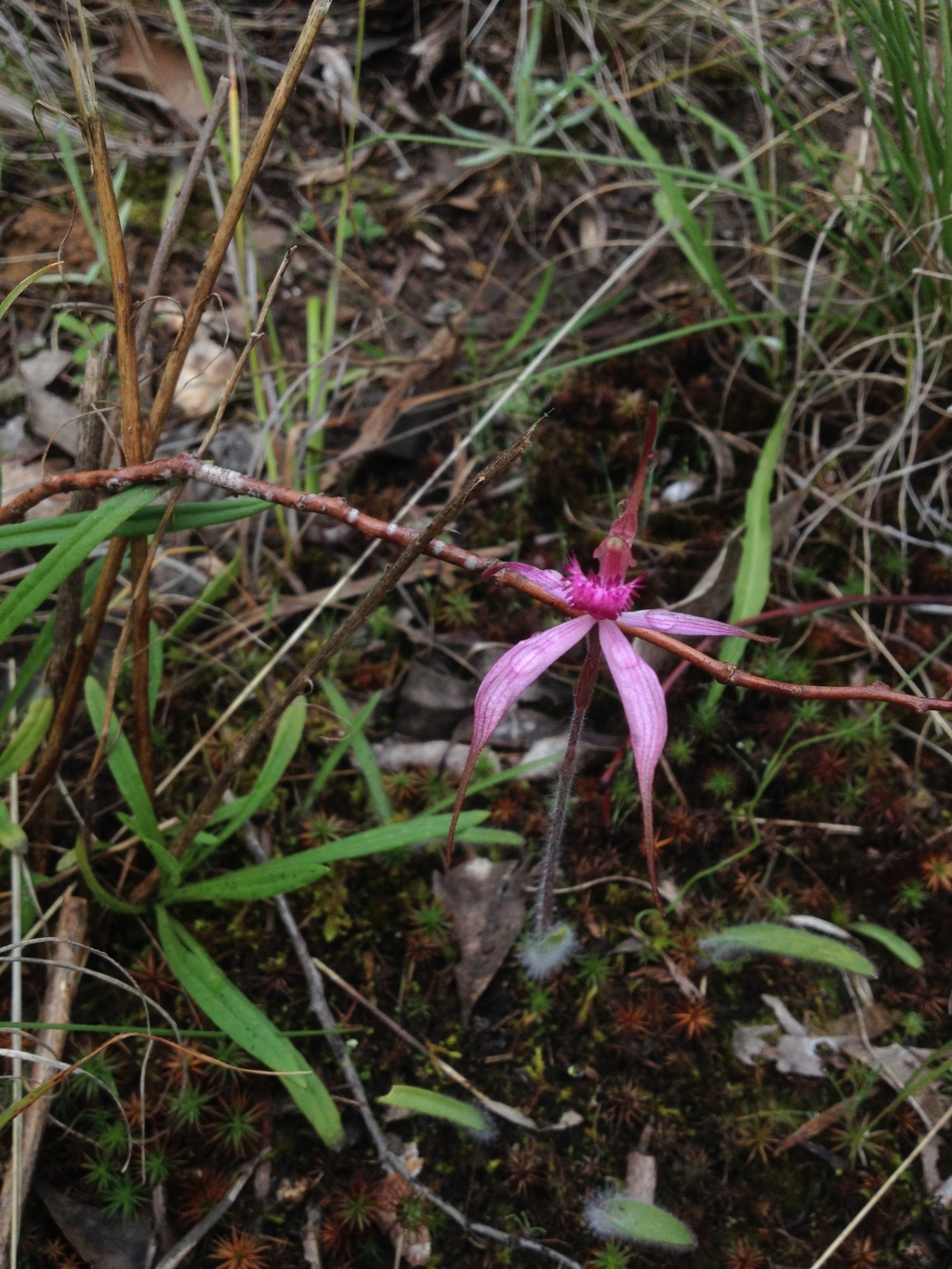Caladenia rosella
G.W.CarrFlowering plant 10–17 cm tall. Leaf 4–9 cm long, 5–8 mm wide, blotched with red at base. Flower solitary, with musk-like fragrance; perianth segments 3–5 cm long, pale to bright rose-pink with dark glandular tail; sepals flattened at base, 2–5 mm wide, tapered to a long tail densely covered in crowded, glandular hairs; petals shorter than sepals but otherwise similar. Labellum curved forward with apex recurved and lateral lobes erect, lamina ovate-cordate, very obscurely 3-lobed, 9–15 mm long and 7–10 mm wide (when flattened), pale pink at base with deep pink mid-lobe, margins and calli, sometimes with a paler tip; margins of lateral lobes fringed with linear calli to 2 mm long; margins of mid-lobe with shorter calli becoming tooth-like and broader towards tip; lamina calli in 4–6 rows, extending slightly onto mid-lobe, narrow, finger-like, to 1.5 mm long at base of lamina, decreasing in size towards apex. Flowers Jul.–Sep.
VVP, GipP, Gold, HSF. Also NSW (Albury). Once occurring in scattered localities through the Victorian goldfields, but now known from only a few sites in the north-eastern outer suburbs of Melbourne. Grows in woodland on skeletal soils.
Characterized by its relatively short perianth segments (less than 5 cm long) which are usually bright rose-pink in colour, and its musk-like floral fragrance.
Caladenia colorata has been discovered recently in western Victoria. The flowers of this species are extremely variable in colour and some plants may key to C. rosella. Some flowers in a population of C. colorata can be partly or mostly cream-green to whitish in colour, while others are pink or entirely blood red.
Entwisle, T.J. (1994). Orchidaceae. In: Walsh, N.G.; Entwisle, T.J., Flora of Victoria Vol. 2, Ferns and Allied Plants, Conifers and Monocotyledons, pp. 740–901. Inkata Press, Melbourne.
 Spinning
Spinning

